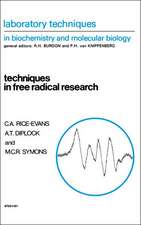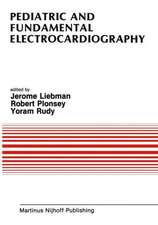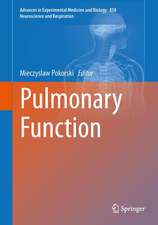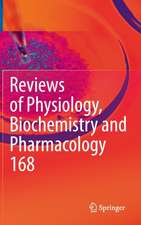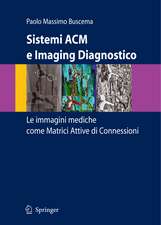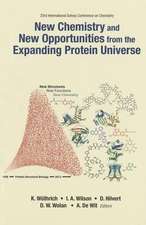Bioelectricity: A Quantitative Approach
Autor Roger C. Barr, Robert Plonseyen Limba Engleză Paperback – 25 apr 2013
| Toate formatele și edițiile | Preț | Express |
|---|---|---|
| Paperback (2) | 669.06 lei 6-8 săpt. | |
| Springer Us – 28 noi 2014 | 669.06 lei 6-8 săpt. | |
| Springer Us – 25 apr 2013 | 1157.86 lei 6-8 săpt. | |
| Hardback (1) | 1103.58 lei 6-8 săpt. | |
| Springer Us – 30 aug 1988 | 1103.58 lei 6-8 săpt. | |
| Mixed media product (1) | 908.11 lei 6-8 săpt. | |
| Springer Us – 21 iun 2007 | 908.11 lei 6-8 săpt. |
Preț: 1157.86 lei
Preț vechi: 1218.80 lei
-5% Nou
Puncte Express: 1737
Preț estimativ în valută:
221.57€ • 228.92$ • 184.31£
221.57€ • 228.92$ • 184.31£
Carte tipărită la comandă
Livrare economică 19 martie-02 aprilie
Preluare comenzi: 021 569.72.76
Specificații
ISBN-13: 9781475794588
ISBN-10: 1475794584
Pagini: 328
Ilustrații: XX, 306 p.
Dimensiuni: 148 x 210 x 17 mm
Greutate: 0.43 kg
Ediția:Softcover reprint of the original 1st ed. 1988
Editura: Springer Us
Colecția Springer
Locul publicării:New York, NY, United States
ISBN-10: 1475794584
Pagini: 328
Ilustrații: XX, 306 p.
Dimensiuni: 148 x 210 x 17 mm
Greutate: 0.43 kg
Ediția:Softcover reprint of the original 1st ed. 1988
Editura: Springer Us
Colecția Springer
Locul publicării:New York, NY, United States
Public țintă
ResearchDescriere
This text is an introduction to electrophysiology, following a quantitative approach. The first chapter summarizes much of the mathematics required in the following chapters. The second chapter presents a very concise overview of the general principles of electrical fields and current flow, mostly es tablished in physical science and engineering, but also applicable to biolog ical environments. The following five chapters are the core material of this text. They include descriptions of how voltages come to exist across membranes and how these are described using the Nernst and Goldman equations (Chapter 3), an examination of the time course of changes in membrane voltages that produce action potentials (Chapter 4), propagation of action potentials down fibers (Chapter 5), the response of fibers to artificial stimuli such as those used in pacemakers (Chapter 6), and the voltages and currents produced by these active processes in the surrounding extracellular space (Chapter 7). The subsequent chapters present more detailed material about the application of these principles to the study of cardiac and neural electrophysiology, and include a chapter on recent developments in mem brane biophysics. The study of electrophysiology has progressed rapidly because of the precise, delicate, and ingenious experimental studies of many investigators. The field has also made great strides by unifying the numerous experimental observations through the development of increasingly accurate theoretical concepts and mathematical descriptions. The application of these funda mental principles has in turn formed a basis for the solution of many different electrophysiological problems.
Cuprins
1. Vector Analysis.- 2. Electrical Sources and Fields.- 3. Introduction to Membrane Biophysics.- 4. Action Potentials.- 5. Propagation.- 6. Subthreshold Stimuli.- 7. Extracellular Fields.- 8. Membrane Biophysics.- 9. The Electrophysiology of the Heart.- 10. The Neuromuscular Junction.- 11. Skeletal Muscle.- 12. Functional Neuromuscular Stimulation.
Recenzii
Praise for Previous Editions:
"This fine text, by two well-known bioengineering professors at Duke University, is an introduction to electrophysiology aimed at engineering students. Most of its chapters cover basic topics in electrophysiology: the electrical properties of the cell membrane, action potentials, cable theory, the neuromuscular junction, extracellular fields, and cardiac electrophysiology. The authors discuss many topics that are central to biophysics and bioengineering [and] the quantitative methods [they] teach will surely be productive in the future."
IEEE Engineering in Medicine and Biology
"The authors’ goal in producing this book was to provide an introductory text to electrophysiology, based on a quantitative approach. In attempting to achieve this goal, therefore, the authors have opened the book with a useful, and digestible, introduction to various aspects of the mathematics relevant to this field, including vectors, introduction to Laplace, Gauss’s theorem, and Green’s theorem. This book will be useful for students in medical physics and biomedical engineering wishing to enter the field of electrophysiological investigation. It will also be helpful for biologists and physiologists who wish to understand the mathematical treatment of the processes and signals at the center of the interesting interdisciplinary field."
Medical and Biomedical Engineering and Computing
"This fine text, by two well-known bioengineering professors at Duke University, is an introduction to electrophysiology aimed at engineering students. Most of its chapters cover basic topics in electrophysiology: the electrical properties of the cell membrane, action potentials, cable theory, the neuromuscular junction, extracellular fields, and cardiac electrophysiology. The authors discuss many topics that are central to biophysics and bioengineering [and] the quantitative methods [they] teach will surely be productive in the future."
IEEE Engineering in Medicine and Biology
"The authors’ goal in producing this book was to provide an introductory text to electrophysiology, based on a quantitative approach. In attempting to achieve this goal, therefore, the authors have opened the book with a useful, and digestible, introduction to various aspects of the mathematics relevant to this field, including vectors, introduction to Laplace, Gauss’s theorem, and Green’s theorem. This book will be useful for students in medical physics and biomedical engineering wishing to enter the field of electrophysiological investigation. It will also be helpful for biologists and physiologists who wish to understand the mathematical treatment of the processes and signals at the center of the interesting interdisciplinary field."
Medical and Biomedical Engineering and Computing
Notă biografică
Robert Plonsey is a Pfizer-Pratt Professor Emeritus of Biomedical Engineering at Duke University. He received the PhD in Electrical Engineering from University of California in 1955. He received the Dr. of Technical Science from the Slovak Academy of Science in 1995 and was Chair, Department of Biomedical Engineering, Case Western Reserve, University, 1976-1980, Professor 1968-1983. Awards: Fellow of AAAS, William Morlock Award 1979, Centennial Medal 1984, Millenium Medal 2000, from IEEE Engineering in Medicine and Biology Society, Ragnar Granit Prize 2004, (First) Merit Award, 1997, International Union for Physiological & Engineering Science in Medicine, the Theo Pilkington Outstanding Educator Award, 2005, Distinguished Service award, Biomedical Engineering Science, 2004, ALZA distinguished lecturer, 1988. He was elected Member, National Academy of Engineering, 1986 ("For the application of electromagnetic field theory to biology, and for distinguished leadership in the emerging profession of biomedical engineering").
Roger C. Barr is Professor of Biomedical Engineering and Associate Professor of Pediatrics at Duke University. In past years he served as the Chair of the Department of Biomedical Engineering at Duke, and then as Vice President and President of the IEEE Engineering in Medicine and Biology Society. He received the Duke University Scholar-Teacher Award in 1991. He is the author of more than 100 research papers about topics in bioelectricity and is a Fellow of the IEEE and American College of Cardiology. This text is a product of interactions with students, and in this regard he has taught the bioelectricity course sequence numerous times.
Roger C. Barr is Professor of Biomedical Engineering and Associate Professor of Pediatrics at Duke University. In past years he served as the Chair of the Department of Biomedical Engineering at Duke, and then as Vice President and President of the IEEE Engineering in Medicine and Biology Society. He received the Duke University Scholar-Teacher Award in 1991. He is the author of more than 100 research papers about topics in bioelectricity and is a Fellow of the IEEE and American College of Cardiology. This text is a product of interactions with students, and in this regard he has taught the bioelectricity course sequence numerous times.
Textul de pe ultima copertă
Bioelectricity: A Quantitative Approach
Robert Plonsey and Roger C. Barr
The study of electrophysiology has progressed rapidly because of the precise, delicate, and ingenious experimental studies of many investigators. The field has also made great strides by unifying these experimental observations through mathematical descriptions based on electromagnetic field theory, electrochemistry, etc., which underlies these experiments. In turn, these quantitative materials provide an understanding of many electrophysiological applications through a relatively small number of fundamental ideas.
Bioelectricity: A Quantitative Approach, is the new edition of the classic introductory text to electrophysiology. It covers many topics that are central to the field including:
- electrical properties of the cell membrane
- action potentials
- cable theory
- electrical stimulation
- extracellular waveforms
- cardiac electrophysiology
- function stimulation (FES)
Organized as a textbook for the student needing to acquire the core competencies, Bioelectricity: A Quantitative Approach will meet the demands of advanced undergraduate or graduate coursework in biomedical engineering and biophysics.
Key Features:
New Detailed Illustrations
Example Problems
Useful Appendixes and Study Guides
Authors:
Robert Plonsey is a Pfizer-Pratt Professor Emeritus of Biomedical Engineering at Duke University. He received the PhD in Electrical Engineering from University of California in 1955. He received the Dr. of Technical Science from the Slovak Academy of Science in 1995 and was Chair, Department of Biomedical Engineering, Case Western Reserve, University, 1976-1980, Professor 1968-1983. Awards: Fellow of AAAS, William Morlock Award 1979, Centennial Medal 1984, Millenium Medal 2000, from IEEE Engineering in Medicine and Biology Society, Ragnar Granit Prize 2004, (First) Merit Award, 1997,International Union for Physiological & Engineering Science in Medicine, the Theo Pilkington Outstanding Educator Award, 2005, Distinguished Service award, Biomedical Engineering Science, 2004, ALZA distinguished lecturer, 1988. He was elected Member, National Academy of Engineering, 1986 ("For the application of electromagnetic field theory to biology, and for distinguished leadership in the emerging profession of biomedical engineering").
Roger C. Barr is Professor of Biomedical Engineering and Associate Professor of Pediatrics at Duke University. In past years he served as the Chair of the Department of Biomedical Engineering at Duke, and then as Vice President and President of the IEEE Engineering in Medicine and Biology Society. He received the Duke University Scholar-Teacher Award in 1991. He is the author of more than 100 research papers about topics in bioelectricity and is a Fellow of the IEEE and American College of Cardiology. This text is a product of interactions with students, and in this regard he has taught the bioelectricity course sequence numerous times.
Praise for Previous Editions:
"This fine text, by two well-known bioengineering professors at Duke University, is an introduction to electrophysiology aimed at engineering students. Most of its chapters cover basic topics in electrophysiology: the electrical properties of the cell membrane, action potentials, cable theory, the neuromuscular junction, extracellular fields, and cardiac electrophysiology. The authors discuss many topics that are central to biophysics and bioengineering [and] the quantitative methods [they] teach will surely be productive in the future."
IEEE Engineering in Medicine and Biology
"The authors’ goal in producing this book was to provide an introductory text to electrophysiology, based on a quantitative approach. In attempting to achieve this goal, therefore, the authors have opened the book with a useful, and digestible, introduction tovarious aspects of the mathematics relevant to this field, including vectors, introduction to Laplace, Gauss’s theorem, and Green’s theorem. This book will be useful for students in medical physics and biomedical engineering wishing to enter the field of electrophysiological investigation. It will also be helpful for biologists and physiologists who wish to understand the mathematical treatment of the processes and signals at the center of the interesting interdisciplinary field."
Medical and Biomedical Engineering and Computing.
Robert Plonsey and Roger C. Barr
The study of electrophysiology has progressed rapidly because of the precise, delicate, and ingenious experimental studies of many investigators. The field has also made great strides by unifying these experimental observations through mathematical descriptions based on electromagnetic field theory, electrochemistry, etc., which underlies these experiments. In turn, these quantitative materials provide an understanding of many electrophysiological applications through a relatively small number of fundamental ideas.
Bioelectricity: A Quantitative Approach, is the new edition of the classic introductory text to electrophysiology. It covers many topics that are central to the field including:
- electrical properties of the cell membrane
- action potentials
- cable theory
- electrical stimulation
- extracellular waveforms
- cardiac electrophysiology
- function stimulation (FES)
Organized as a textbook for the student needing to acquire the core competencies, Bioelectricity: A Quantitative Approach will meet the demands of advanced undergraduate or graduate coursework in biomedical engineering and biophysics.
Key Features:
New Detailed Illustrations
Example Problems
Useful Appendixes and Study Guides
Authors:
Robert Plonsey is a Pfizer-Pratt Professor Emeritus of Biomedical Engineering at Duke University. He received the PhD in Electrical Engineering from University of California in 1955. He received the Dr. of Technical Science from the Slovak Academy of Science in 1995 and was Chair, Department of Biomedical Engineering, Case Western Reserve, University, 1976-1980, Professor 1968-1983. Awards: Fellow of AAAS, William Morlock Award 1979, Centennial Medal 1984, Millenium Medal 2000, from IEEE Engineering in Medicine and Biology Society, Ragnar Granit Prize 2004, (First) Merit Award, 1997,International Union for Physiological & Engineering Science in Medicine, the Theo Pilkington Outstanding Educator Award, 2005, Distinguished Service award, Biomedical Engineering Science, 2004, ALZA distinguished lecturer, 1988. He was elected Member, National Academy of Engineering, 1986 ("For the application of electromagnetic field theory to biology, and for distinguished leadership in the emerging profession of biomedical engineering").
Roger C. Barr is Professor of Biomedical Engineering and Associate Professor of Pediatrics at Duke University. In past years he served as the Chair of the Department of Biomedical Engineering at Duke, and then as Vice President and President of the IEEE Engineering in Medicine and Biology Society. He received the Duke University Scholar-Teacher Award in 1991. He is the author of more than 100 research papers about topics in bioelectricity and is a Fellow of the IEEE and American College of Cardiology. This text is a product of interactions with students, and in this regard he has taught the bioelectricity course sequence numerous times.
Praise for Previous Editions:
"This fine text, by two well-known bioengineering professors at Duke University, is an introduction to electrophysiology aimed at engineering students. Most of its chapters cover basic topics in electrophysiology: the electrical properties of the cell membrane, action potentials, cable theory, the neuromuscular junction, extracellular fields, and cardiac electrophysiology. The authors discuss many topics that are central to biophysics and bioengineering [and] the quantitative methods [they] teach will surely be productive in the future."
IEEE Engineering in Medicine and Biology
"The authors’ goal in producing this book was to provide an introductory text to electrophysiology, based on a quantitative approach. In attempting to achieve this goal, therefore, the authors have opened the book with a useful, and digestible, introduction tovarious aspects of the mathematics relevant to this field, including vectors, introduction to Laplace, Gauss’s theorem, and Green’s theorem. This book will be useful for students in medical physics and biomedical engineering wishing to enter the field of electrophysiological investigation. It will also be helpful for biologists and physiologists who wish to understand the mathematical treatment of the processes and signals at the center of the interesting interdisciplinary field."
Medical and Biomedical Engineering and Computing.
Caracteristici
New edition updates the classic introductory text in electrophysiology Covers the most recent developments in the field, including experimental discoveries and new mathematical descriptions Includes useful appendices and study guides



